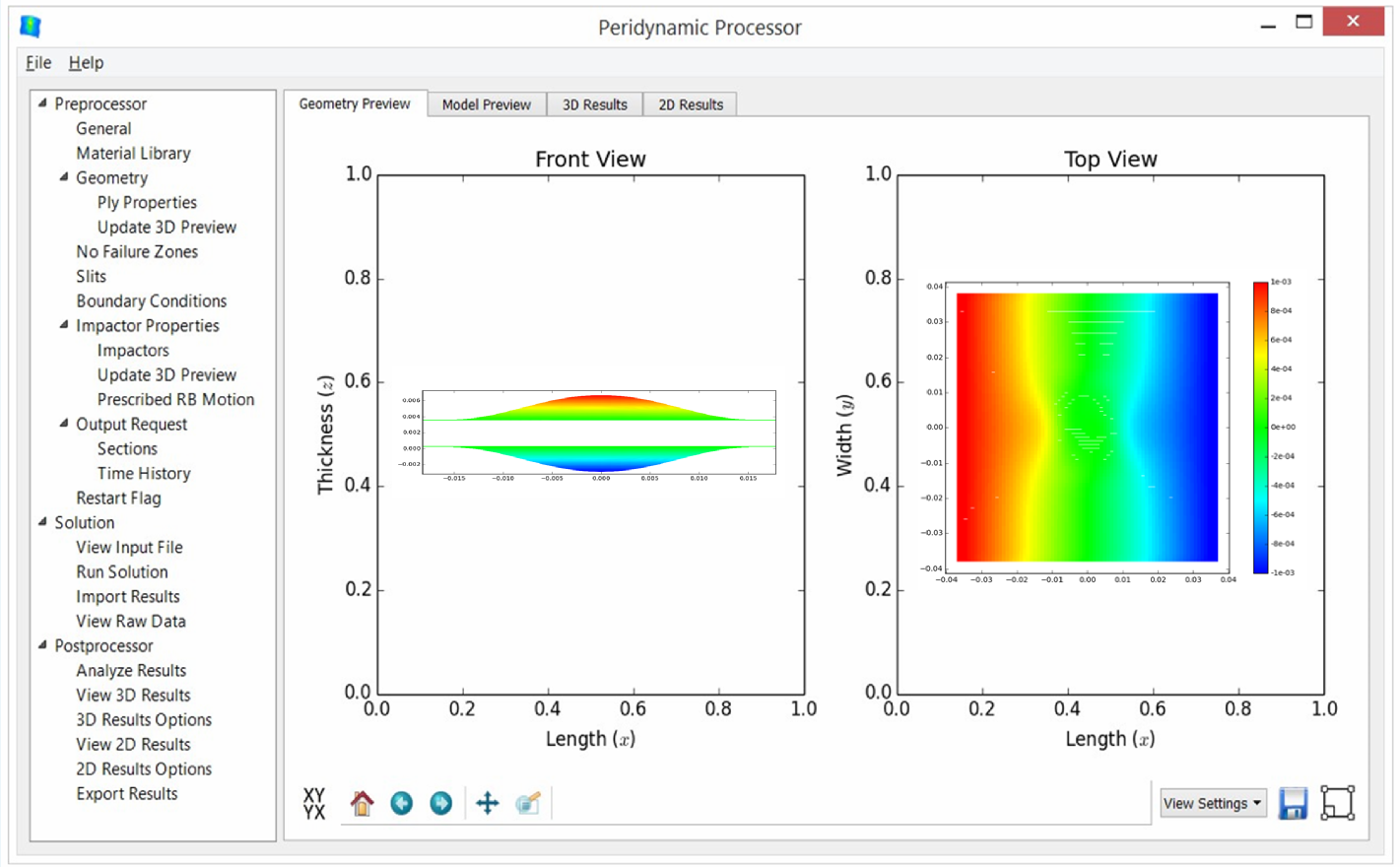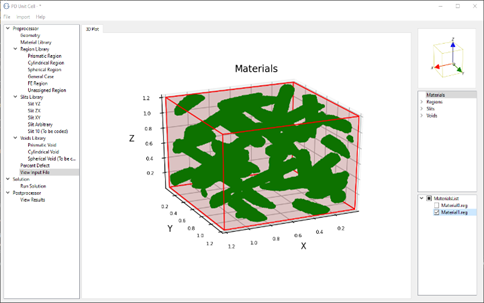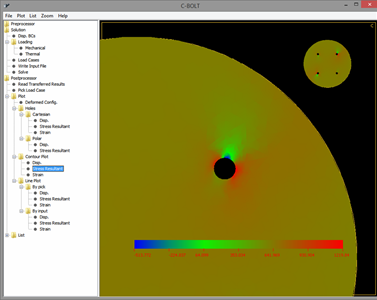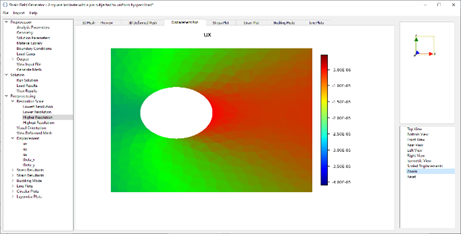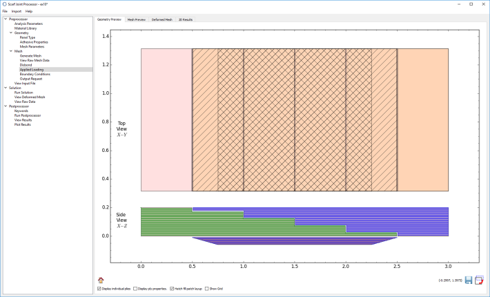Scarf Joint Processor
Efficient and accurate analysis to perform stress analysis for various kinds of scarf joints, repairs, and patches.
About
The Scarf Joint Processor is a python and FORTRAN based advanced tool designed to run the Comprehensive Scarf Repair Analysis (CSR) program. It is designed to perform stress analysis for various kinds of scarf joints, repairs, and patches, as well as to join or repair materials causing moment due to eccentricity. To minimize or eliminate this moment, scarf configuration is used on the joint or repair of the materials. This tool is designed to predict stresses such as interlaminar stresses in the laminate, pure and shear stresses along the interphase between the adherence of the scarf configuration.
Contact Us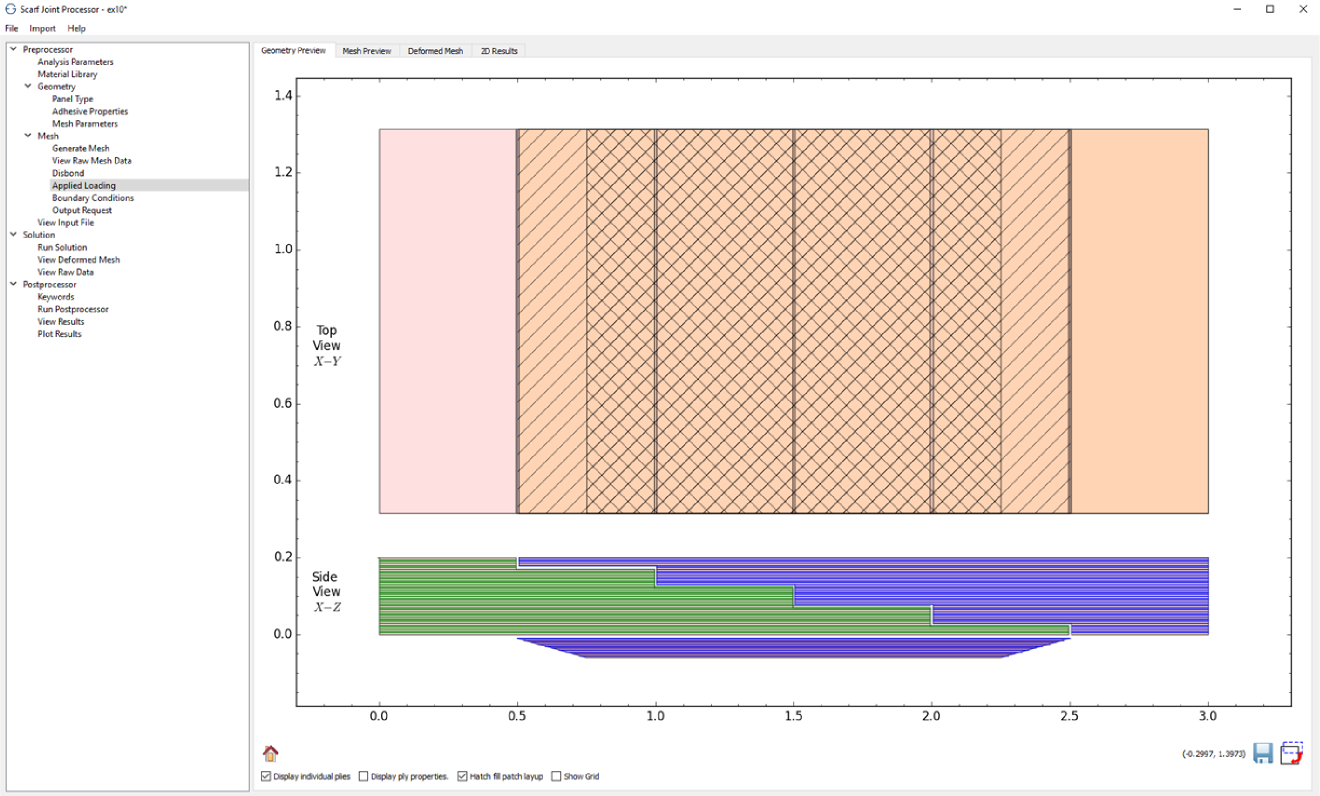
The program uses state-of-the-art zig-zag formulation to predict the stresses in the adherends and the adhesive interphase. Unlike the conventional finite elements, the entire scarf/joint repair is modeled by a "super element" technology that combines the adherends with the adhesive interphase. In another words the entire scarf/joint is represented by these super elements. Since the super elements are internally generated, the user only needs to provide geometric information and material properties. The program is computationally highly efficient. This program assists users in creating input files for CSR, running the simulation and analysis, and viewing the resulting data in interactive two-dimensional and three-dimensional plots.
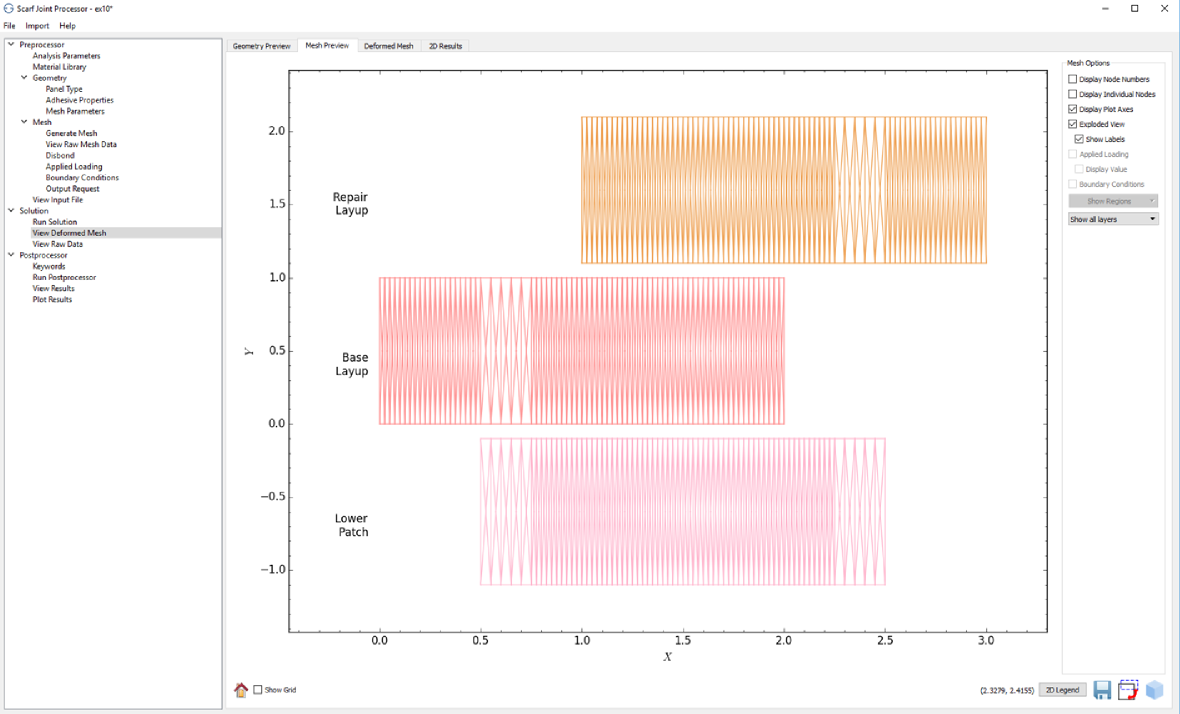
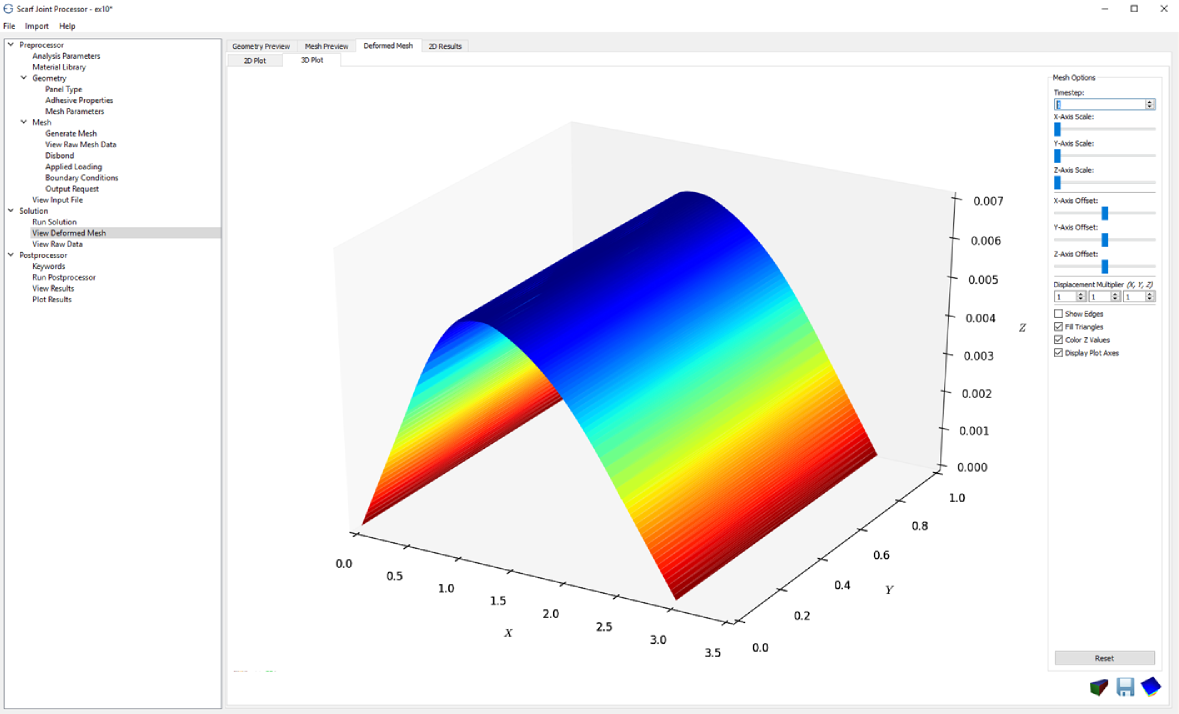
Users can interactively view the simulation as the input file is written, viewing a 2D representation of the geometry along with 2D/3D view of the generated mesh. After running the simulation, deformed results can be viewed in a 3D plot. Additionally, a postprocessor can be run to allow for 2D results (stress, strain, curvature, etc.) to be plotted. Currently, the higher order zig-zag formulation used in the scarf joint/repair analyses is incorporated into Abaqus as a user element.
Features
- Thick plate {2,2}-order Zigzag theory
- No limitation of refinement in thickness
- Computationally robust
- Only planner mesh refinement
- Accurate predictions of six stress components in eachply and adhesive
- Partial disbanding between adhesive and adherents of scarf joint/repair
- General loading and boundary conditions
- Material anisotropy
- Different thicknesses for patch repair and skin
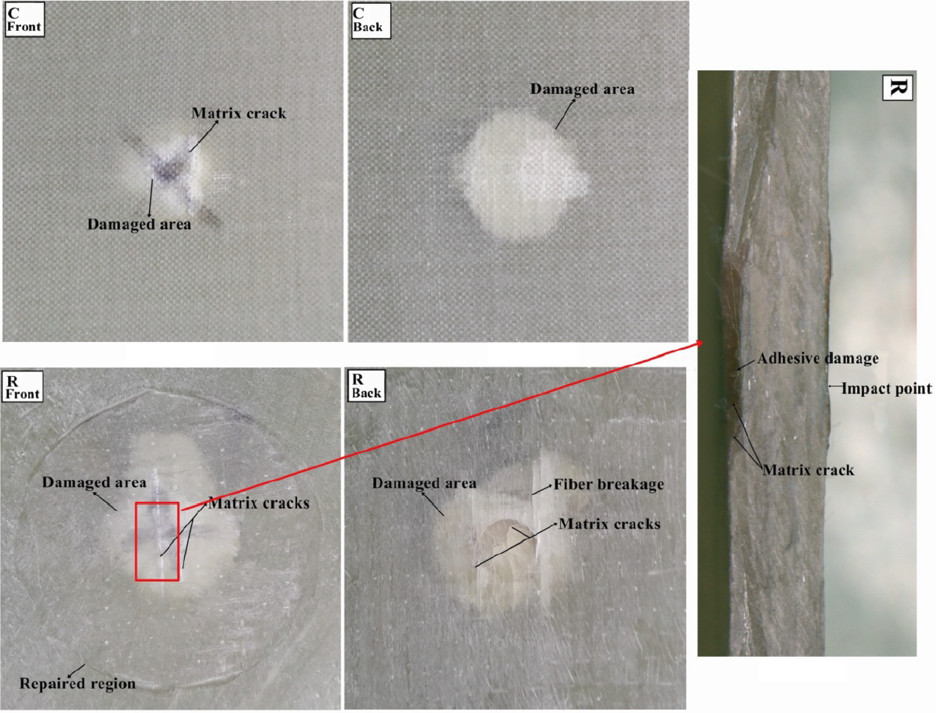
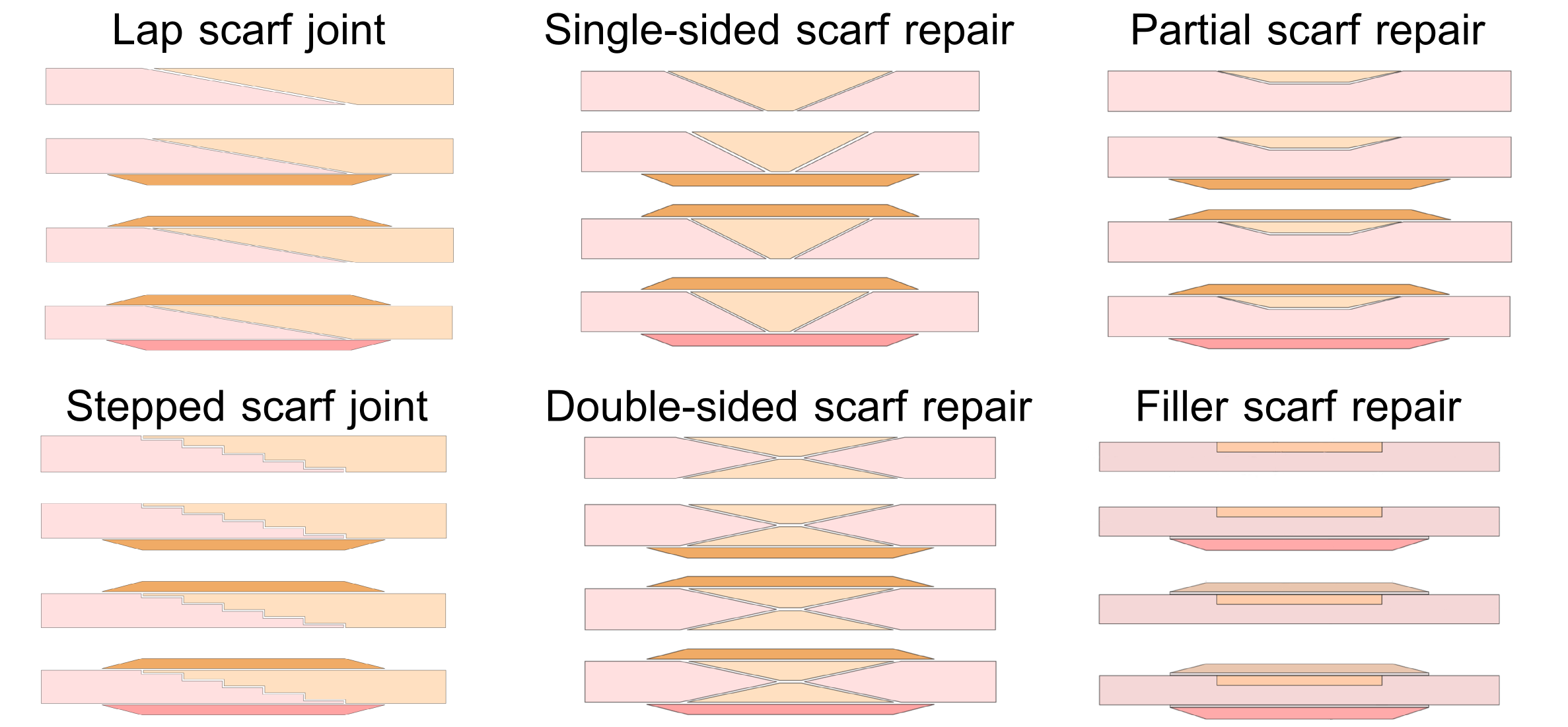
Capabilities
- Custom materials: Isotropic and Orthotropic
- Multiple failure criteria: Fiber, Matrix, and Interply
- Arbitrary ply layup
- Pre-existing cracks
- Force and displacement boundary conditions
- Various projectile shapes: Sphere, ogive, cylinder, etc.
- PInternal force calculation
- Time history tracer points
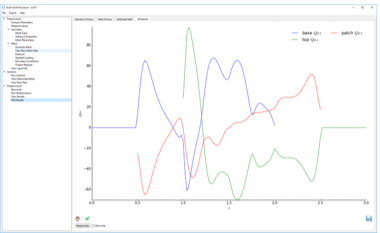
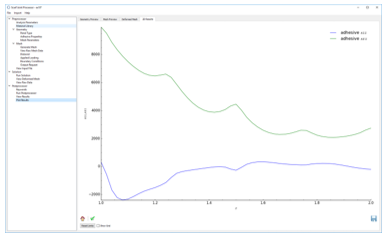
All Products
